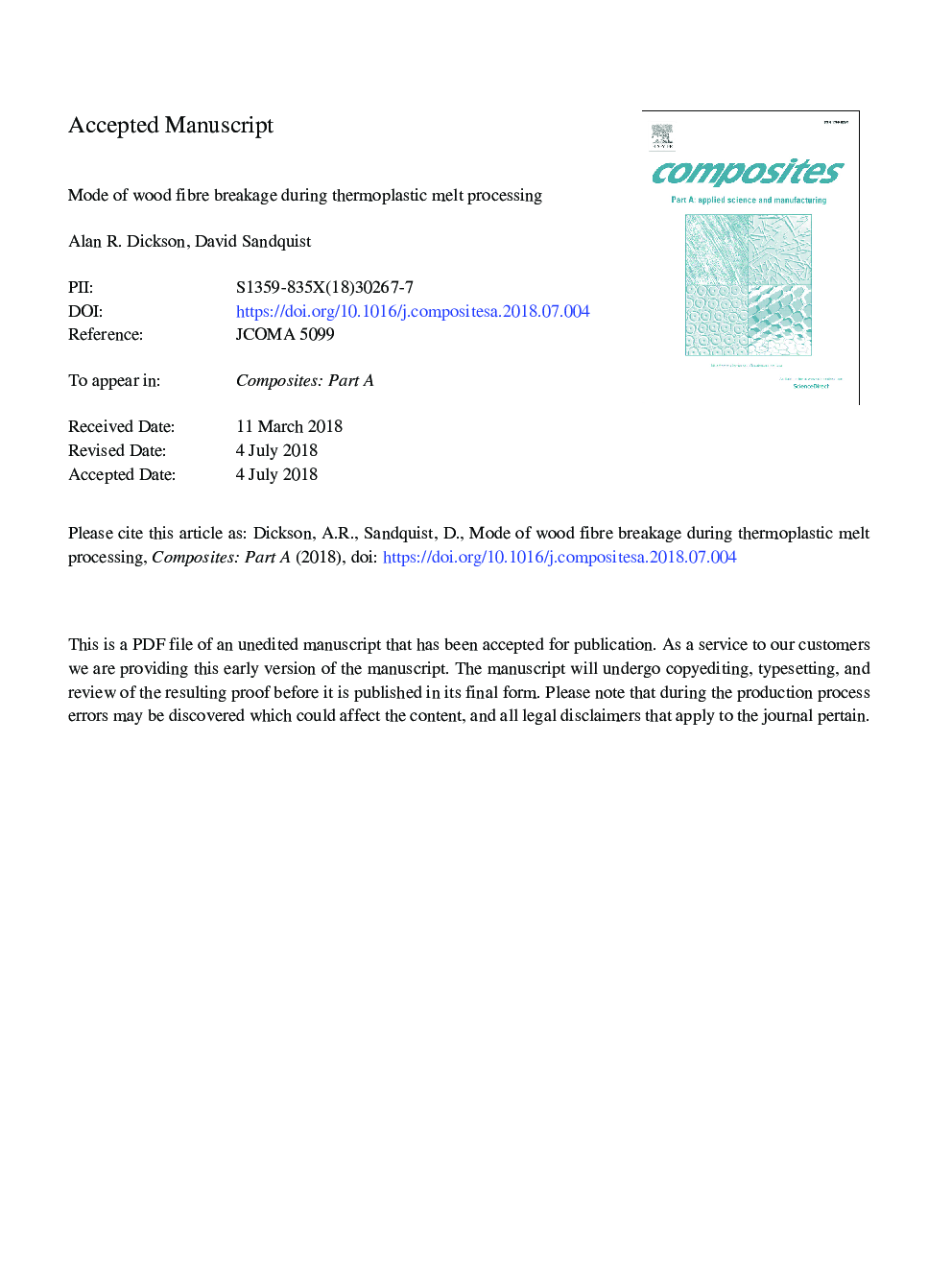| Article ID | Journal | Published Year | Pages | File Type |
|---|---|---|---|---|
| 7889507 | Composites Part A: Applied Science and Manufacturing | 2018 | 29 Pages |
Abstract
During polymer composite melt processing thermomechanical wood pulp fibres (WF) have a different breakage mode than described for other natural fibres and glass fibre. During repeated bending, expected during twin-screw extrusion and injection moulding, WF fail by a mode related to their cross-section dimensions. Generally, fibres with large lumens relative to wall thickness ovalise and buckle. Conversely fibres with small lumens relative to wall thickness generally fracture. Confocal microscopy of WF extracted from the polymer matrix after melt processing showed a high degree of cross-section collapse of the bent and twisted fibres. The ability to cross-sectionally collapse during composites processing may make the fibres more resilient to repeated bending stresses and help with fibre length retention. Observations suggest fractures were initiated from the edges of the bent fibres and propagated across the fibre.
Keywords
Related Topics
Physical Sciences and Engineering
Materials Science
Ceramics and Composites
Authors
Alan R. Dickson, David Sandquist,
